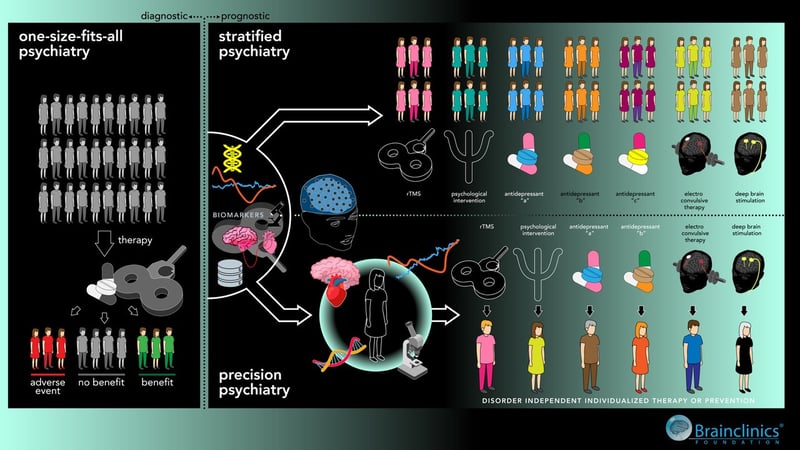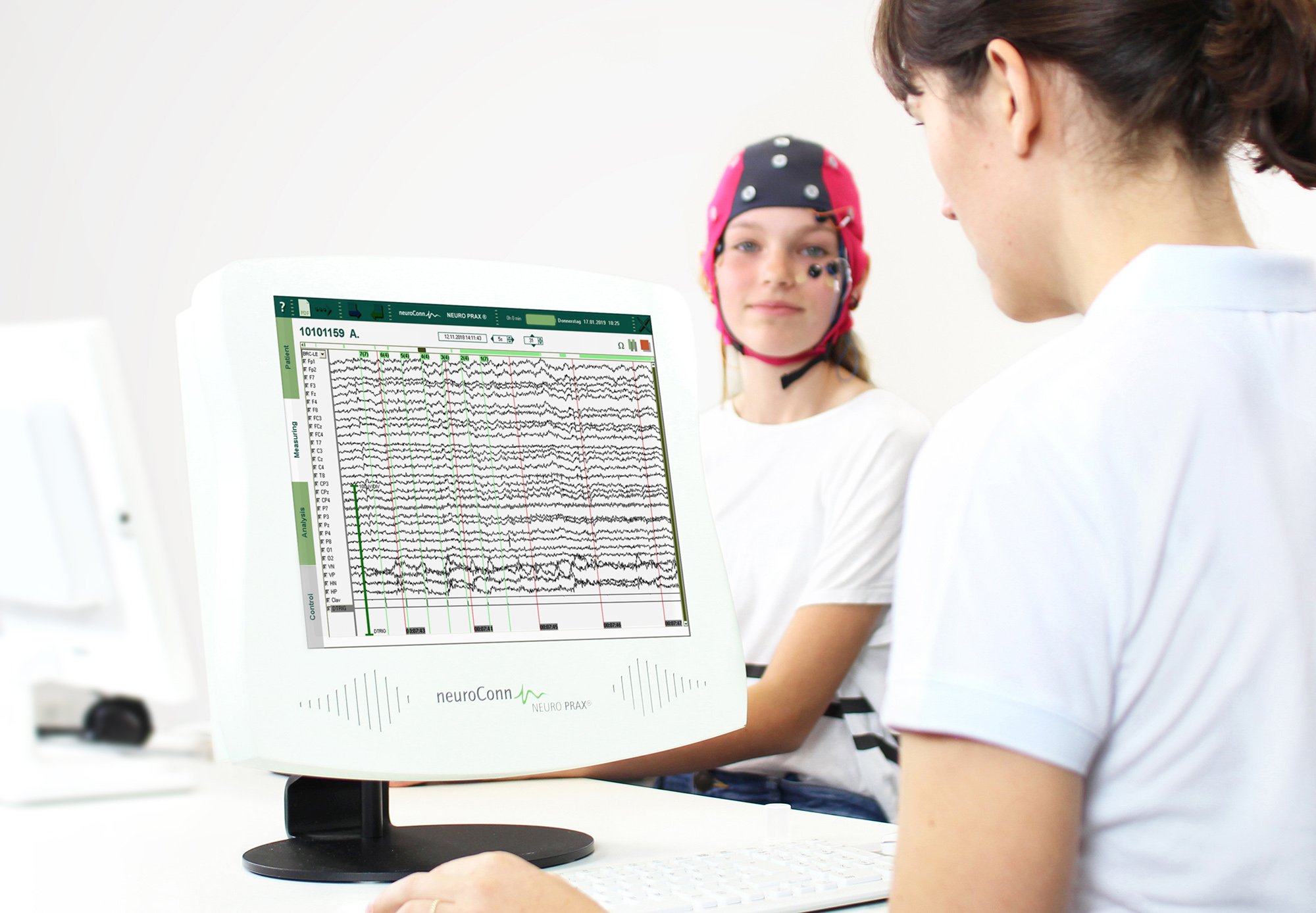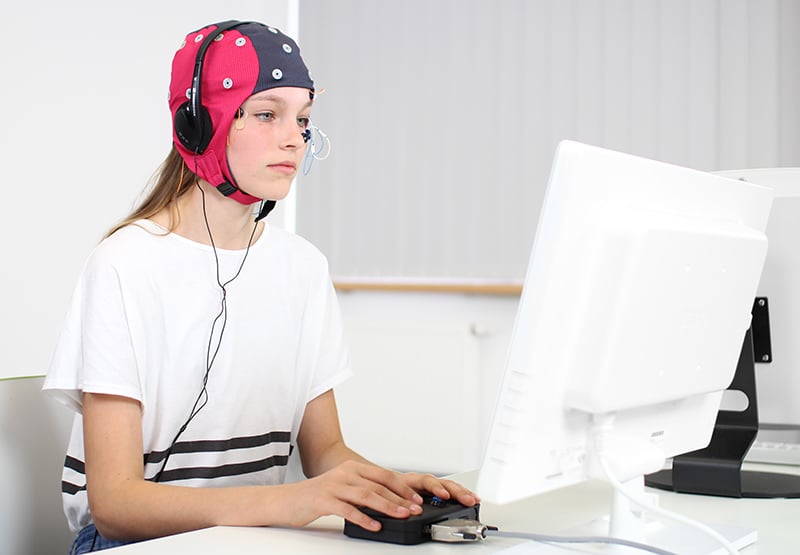neuroLAB
QEEG & neuropsychological Lab for clinical practice
Straight to:

neuroLAB offers your practice or clinic an extensive laboratory for neuropsychological testing and quantitative EEG analysis.
The utilization of neuroLAB has the potential to enhance the effectiveness of treatment by distinguishing among psychiatric patients who initially appear to have similar symptoms.
Initial publications are now accessible, with more publications to come:
- Wu W. et al., 2020: An electroencephalographic signature predicts antidepressant response in major depression
- Pressemitteilung "Meilenstein in der personalisierten Behandlung der Depression"
- van der Vinne N. et al, 2019: Normalization of EEG in depression after antidepressant treatment with sertraline? A preliminary report
- Kirsten A., 2019: Electroencephalogram Source Connectivity in the Prediction of Electroconvulsive Therapy Outcome in Major Depressive Disorder
- Arns M., 2018: Electroencephalographic biomarkers as predictors of methylphenidate response in attention-deficit/hyperactivity disorder
- Arns M., 2012: The Effects of QEEG-Informed Neurofeedback in ADHD: An Open-Label Pilot Study
Our team is here to assist you in your daily practice by offering electrophysiological and neuropsychological evaluations for your patients. We understand the importance of focusing on what truly matters.
Through our cutting-edge technology and services, we enable you to provide state-of-the-art therapy to support your patients. Gain firsthand knowledge from our experts through our workshops or at our therapy centers.

neuroLAB offers
Our advanced technology and software allow you to generate a comprehensive individual profile of the patient's electrophysiological activity through quantitative EEG/brain mapping.
The QEEG assessment is a powerful tool that uncovers neuromarkers and EEG phenotypes associated with a range of psychiatric conditions.

Brain Mapping
Test Battery
Creating electrophysiological test reports using neurocare' s DTP: QEEG
This test battery enables you to conduct various QEEG/Brain mapping tests, including:
- resting EEG - eyes open
- resting EEG - eyes closed
A comprehensive lab, available to clinicians
neuroLAB offers a variety of technical advantages over other systems currently on the market, e.g.
- cloud-based
- validated data base
- replicated studies on gender-specific biomarkers
- standardized procedures in terms of technique and assessment
- technique: wide band EEG / ERP database
- 25 EEG channels
- true DC - 100 Hz recording
- no multiplexing on amplifier
For clinicians offering personalized care
With the neuroLAB method, you have the ability to customize therapy based on the unique needs of each patient, leading to improved treatment outcomes. By analyzing electrophysiological markers, you gain valuable insights into the most effective form of therapy and therapy protocol for the individual. This method is applicable in various scenarios, including personalized medicine, selecting the right protocol for non-invasive brain stimulation techniques (such as TMS/rTMS and tDCS), choosing an appropriate neurofeedback protocol, and applied brain research. This approach is suitable for:
- personalized medicine,
- choosing the right protocol for non-invasive brain stimulation techniques (e.g. TMS/rTMS, tDCS, ECT),
- the choice of an appropriate neurofeedback protocol,
- applied brain research.
neuroLAB supports your clinical work.
Once the QEEG tests are completed, all the collected data is analysed on cloud, and a detailed report is generated for the clinician to download. This process saves clinicians' valuable time and streamlines their manual evaluation.
For those interested in utilizing neuroLAB for a stratified drug selection in MDD to enhance remission rates, we invite you to attend our academy workshops. Our experts will guide you in determining the most suitable medication for your patient.
Interpreting both EEG & QEEG with neuroLAB
Electroencephalography (EEG)
Begin by reviewing the EEG report, which provides important information about the patient's demographics and medical history. This includes details about their physical, medical, and psychological background, as well as any substance use, experiences with depression, anxiety, and stress, emotional intelligence, and sleep history. Please note that any confidential information, such as traumatic experiences, will be appropriately redacted. Take the time to carefully examine the raw EEG in the PDF for any abnormalities, interictal discharges, and assess the overall data quality.
Quantatitve Electroencephalography (QEEG)
neuroLAB QEEG report guides clinician interpretation through various SOPs:
-
The initial pages provide scalp maps of absolute and relative power during eyes open (EO) followed by eyes closed (EC).
-
The review further contains the alpha asymmetry calculated at F3 and F4. This biomarker has the potential to predict the effectiveness of medication treatments.
-
The theta beta ratios during EO and EC is shown in a table and calculated for the channels Fz, Cz and Pz.
-
A score 1 - 10 is showing the individual marker for selecting the appropriate neurofeedback protocol.
-
Further, the power spectra are displayed for the channels in the midline during EO and EC.
-
An individual alpha peak frequency is calculated.
-
The quality of the recorded EEG is shown in rejected epochs.
Enquire today






